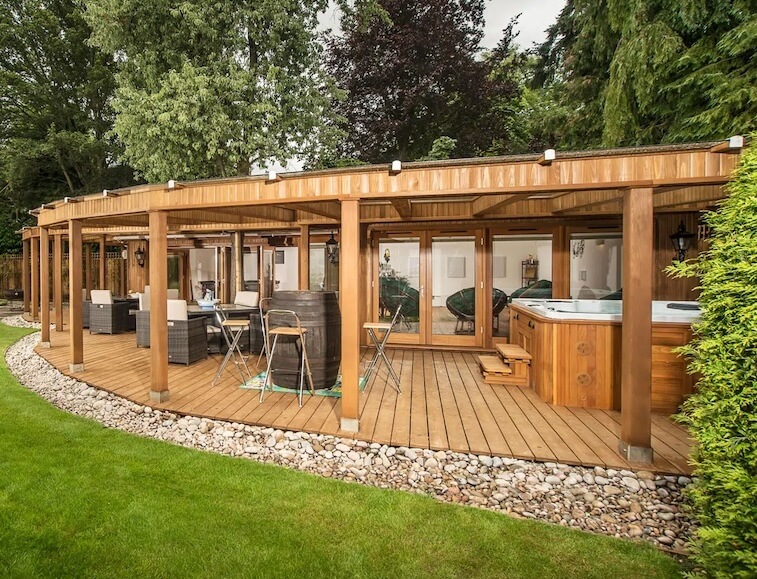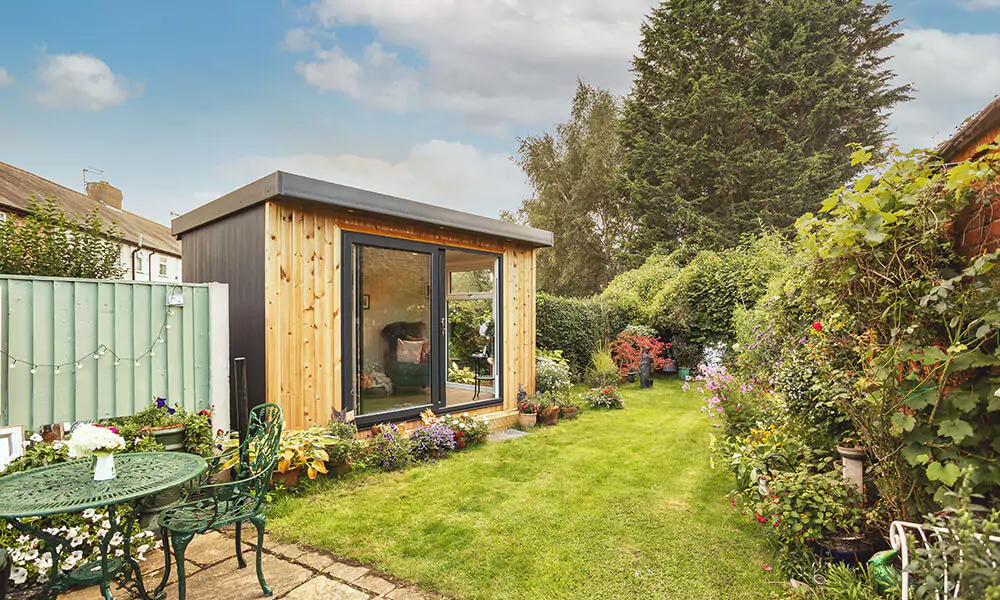Handy Advice For Planning Permission For Garden Extension
Wiki Article
What Permissions Are Required To Build Garden Rooms And Similar Structures In Conservation Areas?
In conservation zones, there are particular restrictions that are in place to protect the character and look of the area. Here are the main considerations for planning permission within conservation zones: General Restrictions
A building or extension that falls under allowed development rights might require planning permission within the conservation area. This applies to garden structures as well as sheds, outbuildings and other structures.
Size and Scale
Planning permission might be required for any building regardless of size if it affects the nature of an area designated as a conservation zone. Extensions and new buildings in designated zones are subject to more stringent regulations.
The property's location
It is more usual to need planning permission for building extensions and other structures located at the front or the sides of a house. It is also possible to seek planning permission for structures located behind the property if these are visible from public space or have an effect on the overall neighborhood's character.
Materials and design:
In conservation areas, the choice of the design and materials used is vital. The choice of materials for a new building or extension needs to be in harmony with the architectural or historical significance of the site. These requirements will require permission for planning.
Demolition:
In conservation zones, the demolishment of existing buildings and parts of buildings (including outbuildings and boundary walls.) generally requires approval from the planning department to ensure that the proposed changes are in line with the nature of the land.
Height limits:
In conservation areas, there are stricter restrictions on height. If a structure is more than 2.5 metres, it is likely that planning permission will be required.
Effects on the surrounding areas
Planning approval is required if the extension or building being proposed substantially alters the visual appearance or setting of the conservation area, including the views from and across the area.
Use of the building:
Even if the garden room or outbuilding is permitted within size limits, its intended use (e.g. for example, as an office space, studio, or living space) might necessitate permission for planning in order to accommodate changes to the property's uses.
Extensions and Alterations
Planning permission is required for all extensions that exceed the specified volume or size limit, or alter the appearance of exteriors. This applies to conservatories as well as other significant changes.
Curtilage Structures:
Structures within the curtilage of a listed building located in a conservation zone must always be approved for planning. This applies to new extensions, outbuildings, or changes.
Trees that are protected:
The trees in conservation zones are typically protected. If your proposed project will affect trees, you might need to seek additional permits, including the tree work permit in addition to planning permission.
Local Authority Guidelines:
Local planning authorities can set up specific guidelines for conservation areas. They could include precise guidelines about what is permissible and what is not specific to the particular characteristics of the particular area.
In the end Planning permission for a conservation zone needs an in-depth assessment of how proposed conservatories, garden rooms, outhouses, gardens offices, or extensions could affect the architectural and historical nature of the region. To ensure that your project meets all relevant rules, it's essential to talk with your local authorities early in the design process. Read the top cedar garden rooms for blog examples including outhouse uk, how to lay decking on soil, ground screws vs concrete base, outhouse buildings, garden rooms near me, outhouse buildings, out house, Tring garden rooms, outhouse buildings, luxury outhouse and more.

What Planning Permission Is Required To Build Garden Rooms, Etc. Terms Of Listed Buildings?
If you're planning to construct conservatories or garden rooms, outhouses or garden offices on the property of a listed building There are particular aspects to take into consideration. Here are a few important things to consider when applying for the planning permission needed for these projects A listed building permit:
Any modification, extension or new construction within the curtilage of a listed building typically requires a listed building permit in addition to planning permission. The reason for this is that changes could affect the character and importance of the listed property.
The impact on the character of historic buildings
An application for planning is required for any construction or extension that may alter the character of the listed property or its setting. This includes garden buildings and outbuildings.
Design and Materials
The structure as well as its components must be consistent with the architectural and historical importance of the listed building. Planning permission is required if design and materials are not traditional.
Proximity of the listed Building:
New structures constructed close to the historic building will be scrutinized for their effect on the appearance and setting of the historic asset. The character of the building will not be affected when planning permission is obtained.
Size and Scale
The size and dimensions of the garden room, conservatory or extension should be appropriate and in harmony with the listed structure. More expansive structures are more likely to need a thorough evaluation and planning permission.
Location of the Property:
The position of the new structure (whether in front, side or back of the listed building) can affect the need to obtain planning permission. Locations that are visible from the street or that impact key views of a structure are typically subject to greater scrutinization.
Changes in the internal structure:
Even if a building was removed, any internal changes (such the creation of new routes for access) to the property must be accompanied by listed building consent as well as planning permission.
Conservation Areas Overlap
There are further restrictions if the building is both listed and located in a conservation area. To ensure that the building is in compliance with the listed building regulations as well as conservation area regulations Planning permission is required.
Use of Buildings:
The location of an outbuilding or a garden room can impact the need to obtain a permit for planning. Uses that imply a significant modification, like commercial or residential uses, are subject to closer examination.
Structural impact:
If a structure could be compromising the structural integrity of the structure, it will need permission for planning.
Local Authority Guidelines
Local authorities often have specific guidelines regarding listed buildings, outlining the kinds and scope of construction and modifications which is allowed. These guidelines are only implemented with permission from the planning department.
Professional Assessments
Conservation experts often need to conduct extensive evaluations of the proposed work to listed buildings. These assessments help determine the appropriateness of the proposed changes and support the planning permission application.
To summarize, planning consent and listed building approvals are required almost every time you're building gardenrooms, conservatories outhouses, office buildings or extensions with the designated building. Talking to the local planning authority and heritage experts before beginning the planning process is vital to ensure that the building is in compliance with all applicable laws and regulations, as well as to ensure the historical and architectural integrity of the building. Follow the top rated how do you heat a garden office for site tips including outhouse builders, garden rooms, garden rooms in St Albans, garden office hertfordshire, insulated garden buildings, what is a garden room, Tring garden rooms, insulated garden buildings, my outhouse, garden office electrics and more.

What Permits Do You Need In Relation To Garden Rooms And Other Structures In Terms Utilities And Infrastructure When It Concerns Planning?
Utilities and infrastructure are important when planning to construct conservatories or garden spaces in addition to outhouses, gardens offices and extensions. They can also impact the need for planning permission. Here are key factors to be considered: Water Supply & Drainage
A planning permit may be required for connecting an additional structure to water or drainage systems. Local water authorities may be required to consider the effects of the new structure on the supply of water or the sewage system.
Gas connections and electric power:
If the building will require connections to electricity and gas an approval for planning may be needed. This connection must adhere to the building regulations and safety standards.
Utility Easements
Planning permission is required for structures that are located in easements (areas reserved for infrastructure and utility lines). The local utility provider may require approval for the construction in these areas.
Septic Tanks and Sewage Systems:
It is essential to get planning permission when installing a septic-tank or sewage system in your home. The compliance with environmental regulations and health standards is vital to these systems.
Drainage, Surface Water Management and Surface Water Management
You might need permission to plan drainage as well as surface water runoff. In order to stop erosion, flooding, and water pollution may need to be taken.
Access to Utilities for Construction
Permission might be required when the construction process requires temporary access to the utilities, for example water (for construction purposes). The temporary connection must be in compliance with safety and environmental standards.
Impact on Local Infrastructure
Planning permission is required to assess the impact of the new structure on local infrastructure, such as roads, utilities, as well as public services. Local authorities will determine whether existing infrastructure can accommodate the new development.
Waste Management:
The planning permission could include requirements regarding recycling and disposal of waste during or after construction. It is crucial to ensure there are adequate recycling and disposal options in the place.
Energy Efficiency and Renewable Energy
Installing energy-efficient features as well as renewable energy systems in a new construction (such as heat pumps or solar panels) could require planning permission. The construction code and environmental standards should be followed.
Telecommunications, Internet and Connectivity
Planning permission may be required in the event that the proposed structure likely to require internet or telecommunications connections. Compliance with the guidelines and standards for telecommunications infrastructure.
Road and Footpath Access:
You might require permission for planning to construct new access roads or footpaths, or modify existing ones. The compliance with safety standards and regulations regarding construction of footpaths and roads is essential.
Accessibility to Public Transport:
Planning permission is required when the structure is going to affect the public transport infrastructure, such as bus stations or train stations. To ensure that public transport infrastructure complies with requirements and regulations, it is essential that the structure is in compliance with them.
In short, utilities and infrastructure factors are crucial in determining whether or not a planning permit is required to build extensions, garden rooms or outhouses. They also need to be considered for garden offices. Planning consultation should be initiated early to ensure compliance to all regulations and standards applicable to the area. See the best garden room cladding for site recommendations including gym outhouse, composite garden office, 4m x 4m garden room, my outhouse, conservatories and garden rooms, garden buildings , what size garden room without planning permission, garden room permitted development, copyright outhouse, composite garden office and more.
